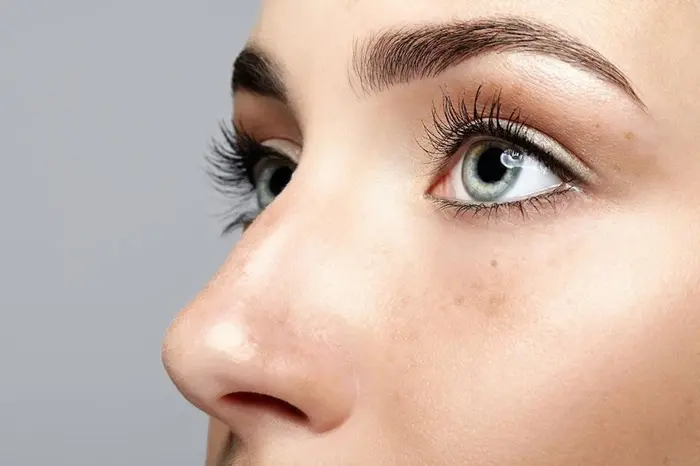Rhinoplasty, commonly known as a nose job, is a popular cosmetic surgical procedure aimed at reshaping or reconstructing the nose. While it can greatly enhance facial harmony and improve nasal function, patients often experience various side effects during the recovery period, one of which is swelling around the eyes. Understanding why eyes get swollen after rhinoplasty and how to manage this swelling can help patients prepare for their recovery journey and ensure a smoother healing process. This article provides an in-depth look at the causes, duration, and management of eye swelling following rhinoplasty.
Understanding Rhinoplasty
What is Rhinoplasty?
Definition
Rhinoplasty is a surgical procedure designed to alter the shape of the nose for either cosmetic or functional purposes. It can involve changes to the nasal bone, cartilage, skin, or all three.
Types of Rhinoplasty
- Open Rhinoplasty: Involves an incision across the columella (the tissue between the nostrils) to allow for greater access to the nasal structures.
- Closed Rhinoplasty: Involves incisions made within the nostrils, leaving no visible scars and resulting in a shorter recovery time.
Purpose of Rhinoplasty
Cosmetic Reasons
Many individuals seek rhinoplasty to improve the aesthetic appearance of their nose, addressing concerns such as a dorsal hump, bulbous tip, or asymmetry.
Functional Reasons
Rhinoplasty can also correct functional issues such as a deviated septum, breathing difficulties, or nasal obstructions.
See Also: How Long Does A Nose Thread Lift Last?
Causes of Swelling After Rhinoplasty
Surgical Trauma
Tissue Manipulation
During rhinoplasty, the surgeon manipulates the bone, cartilage, and soft tissues of the nose. This manipulation causes trauma to the surrounding tissues, leading to inflammation and swelling.
Incisions
Both open and closed rhinoplasty involve incisions, which contribute to tissue injury and subsequent swelling as part of the body’s natural healing response.
Blood and Fluid Accumulation
Hematoma Formation
The disruption of blood vessels during surgery can lead to the accumulation of blood under the skin, known as a hematoma. This can cause significant swelling and bruising around the eyes.
Edema
Fluid accumulation, or edema, is another common cause of swelling post-surgery. The body’s inflammatory response to tissue injury results in the leakage of fluid into the surrounding tissues, including those around the eyes.
Lymphatic System Disruption
Impaired Drainage
The lymphatic system is responsible for draining excess fluid from tissues. Surgery can temporarily impair lymphatic drainage, leading to the buildup of fluid and swelling around the eyes.
Duration of Swelling
Immediate Post-Operative Period
First Few Days
Swelling around the eyes is most pronounced during the first few days after surgery. This is due to the acute inflammatory response to surgical trauma.
First Week
Peak Swelling
Swelling typically peaks around the third to fifth day post-surgery. During this time, patients may experience significant puffiness and bruising around the eyes and nose.
Subsequent Weeks
Gradual Reduction
After the first week, swelling gradually begins to subside. However, mild to moderate swelling can persist for several weeks as the tissues continue to heal.
Long-Term Swelling
Final Results
It can take several months for all residual swelling to completely resolve and for the final results of the rhinoplasty to be fully visible. In some cases, minor swelling may persist for up to a year.
Managing Swelling After Rhinoplasty
Immediate Post-Surgery Care
Cold Compresses
Applying cold compresses to the eye area during the first 48 hours post-surgery can help reduce swelling and minimize bruising. Cold therapy constricts blood vessels and reduces fluid accumulation.
Head Elevation
Keeping the head elevated, even while sleeping, helps prevent fluid from pooling in the facial area and reduces swelling. Patients are advised to sleep with their head elevated on pillows for the first few weeks.
Medication
Anti-Inflammatory Drugs
Nonsteroidal anti-inflammatory drugs (NSAIDs) can help reduce inflammation and alleviate swelling. However, patients should consult their surgeon before taking any medication, as some drugs may increase the risk of bleeding.
Arnica and Bromelain
Homeopathic remedies such as arnica and bromelain have anti-inflammatory properties and may help reduce swelling and bruising. These supplements should be used under the guidance of a healthcare provider.
Hydration and Diet
Staying Hydrated
Proper hydration helps the body eliminate excess fluids and reduces swelling. Patients should drink plenty of water and avoid dehydrating substances like caffeine and alcohol.
Low-Sodium Diet
Reducing sodium intake can help prevent fluid retention and minimize swelling. Patients are advised to consume a low-sodium diet during the recovery period.
Gentle Massage
Lymphatic Drainage Massage
Lymphatic drainage massage is a gentle technique that can help promote fluid drainage and reduce swelling. Patients should seek the guidance of their surgeon or a qualified therapist before attempting massage.
Potential Complications
Persistent Swelling
Prolonged Inflammation
In some cases, swelling may persist longer than expected due to prolonged inflammation or other underlying issues. Patients should consult their surgeon if swelling does not improve over time.
Infection
Signs and Symptoms
Infection is a rare but serious complication that can cause increased swelling, redness, and pain. Signs of infection include fever, pus, and worsening swelling. Immediate medical attention is required if an infection is suspected.
Hematoma
Management
Large hematomas may require medical intervention to drain the accumulated blood. Patients should report any unusual swelling or bruising to their surgeon promptly.
Conclusion
Swelling around the eyes is a common and expected side effect of rhinoplasty. It results from surgical trauma, blood and fluid accumulation, and temporary disruption of the lymphatic system. While the initial swelling is most pronounced during the first few days post-surgery, it gradually subsides over the following weeks and months. Proper post-operative care, including cold compresses, head elevation, and a healthy diet, can help manage swelling and promote healing. Understanding the causes and duration of swelling, as well as the potential complications, allows patients to better prepare for their recovery and achieve optimal results from their rhinoplasty procedure. Always consult with a qualified and experienced surgeon to ensure the best possible outcome.
Related topics:


